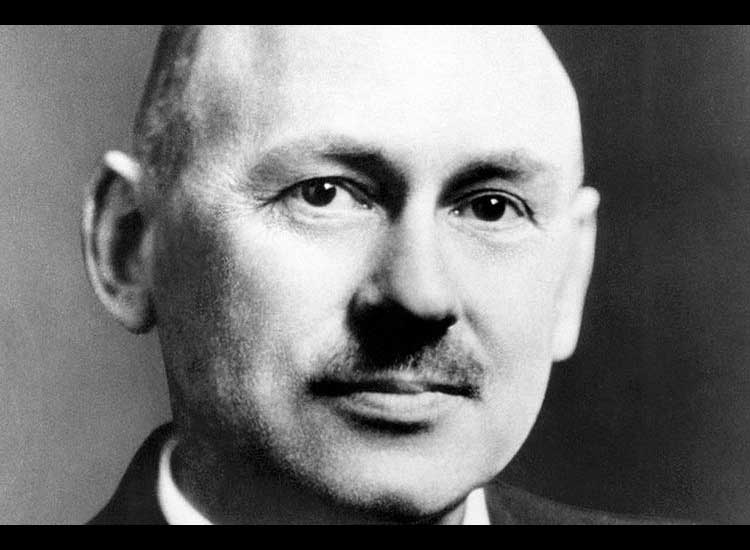Robert H Goddard: Inventor of the First US Rocket, Underestimated for Most of His Life – Robert Hutchings Goddard was America’s first rocket scientist , whose discoveries have shaped the history of the development of space technology .
However, his discoveries were not considered important by the government or military, half of his working life.
Goddard did not give up on the stigma he received at that time. He persisted in continuing to develop his discoveries, which he believed were of great value, so that modern humans are now grateful for his intellectual work.
Goddard’s youth
Robert Goddard was born in Worcester, Massachusetts, on October 5, 1882, to farmers Nahum Goddard and Fannie Louise Hoyt.
According to his biographical notes reported by Thought Co , Goddard was known to be sickly as a child. However, he was very enthusiastic about going to study the sky with his telescope, until finally he became interested in studying science, especially flight mechanics.
Smithsonian Magazine and articles by aviation expert Samuel Pierpont Langley, which he discovered further fueled his lifelong interest in studying aerodynamics.
As an undergraduate, Goddard attended Worcester Polytechnic Institute, where he studied physics.
He received a doctorate at Clark University in 1911, then took a research fellowship at Princeton University the following year.
Eventually, he joined Clark University as a professor of aerospace engineering and physics, a position he remained in for most of the rest of his life.
Rocket research
Robert Goddard began writing about rockets when he was still an undergraduate. After getting his doctorate, he focused on studying the atmosphere using rockets to raise instruments high enough to measure temperature and pressure.
His passion for studying the higher layers of the Earth’s atmosphere pushed him to experiment with rockets as a possible technology for sending things.
Goddard had difficulty obtaining funding to continue his work, but eventually he was able to persuade the Smithsonian Institution to support his research.
In 1919, he wrote his first major work published by the Smithsonian, entitled “A Method of Reaching Extreme Altitudes”.
In his writings, he outlines how to solve the challenge of lifting mass into the high atmosphere and explores how rockets can solve the problem of studying altitude.
Goddard experimented with a number of different rocket configurations and fuel loads. Starting with solid rocket propellant fuel mixtures in 1915.
Eventually, he switched to liquid fuel, which required redesigning the rockets he used. So he had to engineer fuel tanks, turbines and combustion chambers that weren’t designed for this kind of work.
On March 16, 1926, Goddard’s first rocket launched from a hill near Worcester, Massachusetts, at a height of more than 12 meters in 2.5 seconds.
The gasoline-powered rocket made further developments in rocket flight. Goddard began work on a newer, more powerful design using a larger rocket.
He then attempted to solve the problem of controlling the angle and position of the rocket’s flight, and also had to engineer a rocket nozzle that would help create greater thrust for the vehicle.
Goddard also worked on a gyroscope system to control rocket stability and designed a payload compartment to carry scientific instruments.
Later, he created a parachute renewal system to safely return the rocket and payload to the ground.
He then patented the multi-stage rocket that is commonly used today. His 1919 paper, plus other investigations into rocket design, are considered classics in the field.
Criticism of Goddard
Although his innovative work attracted scientific interest, his first rocket experiments were criticized in the press as too fanciful.
However, much of the press coverage at the time contained scientific inaccuracies.
The most famous example appeared on January 20, 1920, in The New York Times . The article ridiculed Goddard’s predictions, which suggested that rockets might one day be able to circle the Moon and transport humans and instruments to other worlds.
The New York Times retracted the mocking statement in that article 49 years later, with a clarification published on July 16, 1969, the day after three astronauts landed on the Moon.
“Further investigations and experiments have confirmed Isaac Newton’s findings in the 17th century and it is now definitively established that rockets can function in a vacuum as well as in an atmosphere. The Times regrets its error,” it clarified.
End of his career
Goddard continued his rocket work throughout the 1920s and 1930s. He is still struggling to get recognition for the potential of his work by the US government.
Eventually, he moved his operations to Roswell, New Mexico, and with financial support from the Guggenheim family, he was able to conduct more rocket research.
In 1942, Goddard and his team moved to Annapolis, Maryland, to work on jet-assisted take-off (JATO) technology.
He continued to refine his design during World War II, although did not share his work with other scientists.
Goddard preferred secrecy because of his concerns about patent infringement and intellectual property theft.
Simultaneously, it has repeatedly offered its services and technology, but only met with resistance from the military and government.
Near the end of World War II and not long before his death, Goddard had the opportunity to capture a German V-2 rocket, realizing how much the Germans had copied his work, despite the patents the Germans had obtained.
Death and legacy
Throughout his life, Robert H. Goddard remained on the research faculty at Clark University. After World War II, he joined the American Rocket Society on its board of directors.
At the age of 63, his health deteriorated and this hard-working man finally died on August 10, 1945. He was buried in Worcester, Massachusetts in his homeland.
After his death, Goddard’s wife, Esther Christine Kisk, collected documents on his rocket inventions. Kisk attempted to replace her husband’s struggle to obtain a patent for America’s first rocket.
Many of Goddard’s original papers containing important work on rockets can be viewed from the Smithsonian Institution Archives.
The influence of Goddard’s work and hard work continues to be felt throughout modern human space exploration efforts now and into the future.
Link Terkait :





